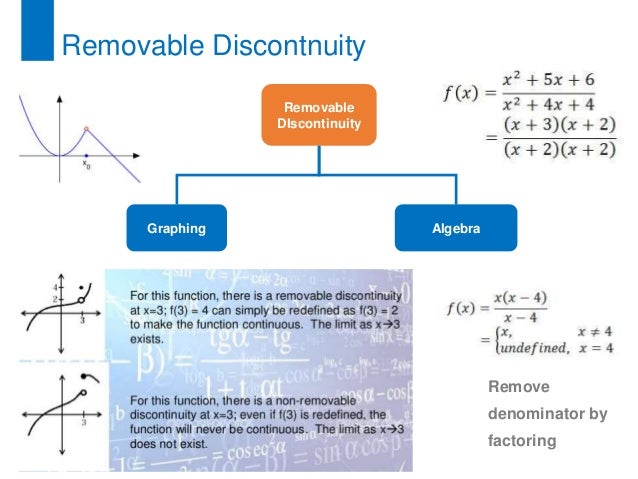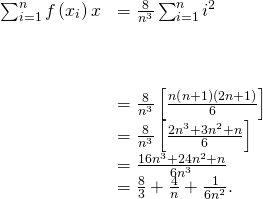Unit 1 - Limits and Continuity
| ||||||||||||||||||||||||||||||||||||||||||||||||||||||||||||||||||||||||||||||||||||||||||||||||||||||||||||||||||||||||||||||||||||||||||||||||
Intro to Limits Homework 01 HW Solutions Video Solutions Finding Limits Algebraically Notesheet 02 Completed Notes N/A Finding Limits Algebraically Practice 02 Solutions N/A Finding Limits Algebraically Homework 02 HW Solutions Video Solutions Limits and Graphs Practice 03 Solutions N/A Limits Involving Infinity Notesheet 03. The tendency of f(x) at x=a towards the left is called left limit and denote by lim x→a – and towards the right is called right limit denoted by lim x→a +. Limit of a function at a point is the common value of the right and left hand limits, if they coincide. The graphical representation of limits is as follows: Algebra of limits.
Limits and Continuity. Need limits to investigate instantaneous rate of change. Do not care what the function is actually doing at the point in question. Limits may exist at a point even if the function itself does not exist at that point. No reason to think that the limit will have the same value as the function at that point. Limits and continuity concept is one of the most crucial topics in calculus. Combination of these concepts have been widely explained in Class 11 and Class 12. A limit is defined as a number approached by the function as an independent function’s variable approaches a particular value.
We use MathJax
Continuity and Discontinuity
Functions which have the characteristic that their graphs can bedrawn without lifting the pencil from the paper are somewhat special,in that they have no funny behaviors. The property which describes thischaracteristic is called continuity.
Definition of Continuity at a Point
A function $f(x)$ is continuous at a point where $x=c$ when the following three conditions are satisfied.
- The function exists at $x=c$. (In other words, $f(c)$ is a real number.)
- The limit of the function exists at $x=c$. (That is, $limlimits_{xto c}f(x)$ is a real number.)
- The two values are equal. (That is, $limlimits_{xto c}f(x)=f(c)$.)


If a function has a hole, the three conditions effectively insistthat the hole be filled in with a point to be a continuous function.
More Definitions
Continuity can also be defined on one side of a point, using a one-sided limit.
- A function $f(x)$ is continuous from the left at the value $x=c$ when $f(c)$ exists, $limlimits_{xto c-}f(x)$ exists, and $limlimits_{xto c-}f(x)=f(c)$.
- A function $f(x)$ is continuous from the right at the value $x=c$ when $f(c)$ exists, $limlimits_{xto c+}f(x)$ exists, and $limlimits_{xto c+}f(x)=f(c)$.
We can also define continuity on an interval.
- A function $f(x)$ is continuous on the open interval $(a,b)$ if it is continuous at every point $x=c$ contained in that interval.
- A function $f(x)$ is continuous on the closed interval $[a,b]$ if it is continuous on the open interval $(a,b)$, it is continuous from the right at $x=a$, and continuous from the left at $x=b$.
- A function $f(x)$ is continuous everywhere if it is continuous at every point on the interval $(-infty,infty)$.
Rather than define whether a function is continuous or not, it is more useful to determine where a function is continuous.
Testing for Continuity
Show that the function $f(x)=left{matrix{ dfrac{2x-6}{x-3} & text{when } xne 3 2 & text{when } x=3}right}$ is continuous at $x=3$.
| Note that $f(3)=2$, by the definition of $f(x)$. | Therefore the function exists, and the first condition is met. |
| Also, $limlimits_{xto 3}dfrac{2x-6}{x-3}=limlimits_{xto 3}dfrac{2(x-3)}{x-3}=limlimits_{xto 3}2=2$. | The limit exists, and the second condition is met. |
| And this implies $limlimits_{xto 3}dfrac{2x-6}{x-3}=f(3)$. Therefore, $f(x)$ is continuous at $x=3$. | The equality demonstrates the third and last condition. |
To prove a function is not continuous, it is sufficient to show that one of the three conditions stated above is not met.
Types of Discontinuity
When a function is not continuous at a point, then we can say it isdiscontinuous at that point. There are several types of behaviors thatlead to discontinuities.
A removable discontinuity exists when the limit of thefunction exists, but one or both of the other two conditions is notmet. The graphical feature that results is often colloquially called ahole. The first graph below shows a function whose value at $x=c$ is not defined. The second graph below shows a function which has both a limit and a value at $x=c$, but the two values are not equal. This type of function is frequently encountered when trying to find slopes of tangent lines.
An infinite discontinuity exists when one of the one-sided limits of the function is infinite. In other words, $limlimits_{xto c+}f(x)=infty$, or one of the other three varieties of infinite limits. If the twoone-sided limits have the same value, then the two-sided limit willalso exist. Graphically, this situation corresponds to a verticalasymptote. Many rational functions exhibit this type of behavior.
A finite discontinuity exists when the two-sided limit doesnot exist, but the two one-sided limits are both finite, yet not equalto each other. The graph of a function having this feature will show avertical gap between the two branches of the function. The function $f(x)=dfrac{|x|}{x}$ has this feature. The graph below is of a generic function with a finite discontinuity.
An oscillating discontinuity exists when the values of thefunction appear to be approaching two or more values simultaneously. Astandard example of this situation is the function $f(x)=sinleft(dfrac{1}{x}right)$, pictured below.
1.6 Limit Based Continuityap Calculus Calculator
It is possible to construct functions with even strangerdiscontinuities. Often, mathematicians will refer to these examples as'pathological', because their behavior can seem very counterintuitive.One such example is the function $f(x)=left{matrix{ x & text{when }xtext{ is rational} 2 & text{when }xtext{ is irrational}}right}$. This function can be proven to be continuous at exactly one point only. An approximation of its graph is shown below.
1.6 Limit Based Continuityap Calculus 2nd Edition
